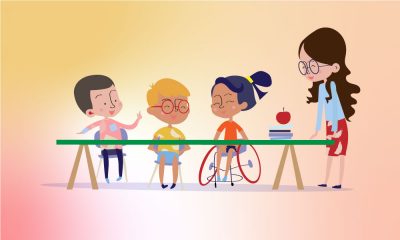Education
The Trap Year: How COVID-19 Will Impact American Universities
The pandemic's impact will be far reaching.
Going to university has never been a more complicated choice than now. The U.S. is withdrawing visas for foreign students whose courses are now online. Students inside the country are rebelling against tuition fees which are detached from the current global economic reality. Young people and parents alike, are struggling to decide on their future plans with COVID-19 hitting higher education particularly hard.
A report by the International Labour Organisation, titled “Youth & COVID-19: Impacts on jobs, education, rights and mental well-being,” found that 38% of young people are uncertain of their future career prospects. The idea of taking additional loans only to enrol in online classes in an economic recession is not being viewed as a particularly shrewd one, with a reckoning for universities on the march.
To forecast the future of higher education and understand its impact on students, educators and universities, Re:Set asked education experts to weigh in on the future of the industry and how the pandemic will impact various facets of the college experience and a student’s life. In this first part of a three-part series titled ‘The Trap Year,’ we spoke with Robert Franek, Editor-in-Chief of The Princeton Review, about enrolment trends, and the future of higher education in America.
Editor’s note: This interview has been edited and condensed for clarity.
What are some of the major enrolment trends post the coronavirus in universities?
At The Princeton Review, the three key things we are seeing among the students we work with in our test-prep and college admission counseling programs are:
The location of the college is more important than ever:
While pre-coronavirus, we found that students tended to want to attend a college farther from their home than their parents wished for them; post-coronavirus, we are finding students and parents alike increasingly interested in colleges that are nearer to where they live. This is attributable in part to health and safety concerns during these uncertain times of the pandemic, and in part to financial issues.
Financial aid is more urgently needed:
College cost has always been a major concern, but with many families losing income due to job losses and experiencing savings depletions, this puts additional strains on their ability to pay for college. Colleges are doing their best to offer additional aid to students they are eager to enrol, but the competition for aid outstrips the resources schools have to meet all student needs.
More students are opting to attend a nearby community college:
Some are doing this with hopes of transferring their credit to a four-year college and graduating with a degree from the four-year college.
Do you see more students taking a gap year?
Interest in taking a gap year is up, but it’s too early to know if it will result in more students taking a gap year. Gap year applications need approvals from the colleges i.e. a commitment to enrol at the college and sending a deposit. While colleges pushed their “decide by” deadline to admitted students from May 1 to June 1, many schools have extended this deadline further.
So the number of students taking a gap year won’t be known until the fall semester begins.

Photo courtesy: Robert Franek
How will this impact enrolment in a post-COVID world? Will more students opt for online classes
COVID-19 and the economic impact of it will make for lasting changes in the higher education community and in the K-12 arena too. Most colleges are reopening in the fall with a mix of classes, some in-person and some online. At those that are staying fully online in the fall, there may be enrolment declines. Some students are resisting paying full tuition for an online education that previously was an on-campus experience. But, we don’t think this will be a significant decrease.
Moving forward, more online classes will be offered in general and more students will be taking them — purely because they are good choices for the students. There are many ways in which online classes provide positive opportunities for learning, and certainly expand the access to it. These, of course, will vary greatly by subject, a student’s learning style and other factors. Many degree programs at the graduate level are offered entirely online and we think more will be in the years ahead.
We taught our first online course in the late 1990s (we offer a full range of in-class, online, self-paced classes and tutoring, both in-person and virtual). One can serve more people through technology and this is a good thing. Not good for every student, not good for all subjects. But in general, definitely a plus.
What will be the impact on the middle to lower tier of American universities if enrolment reduces, assuming the highest ranked ones will just go lower down their waitlists to fill classes?
Some universities in fragile financial straits will [be majorly impacted] if they don’t reach their enrolment and funding goals and don’t have reserve funds to sustain them. Some will need to consider reducing programs and services, some may merge with other institutions. In the worst case scenario, some may need to close. But, the majority of the 2,400 four-year colleges in the U.S. will make it through these challenging times, even with enrolment drops — including those in “middle tier” level rankings.
The pandemic is affecting international student enrolment and attendance at U.S. colleges due to travel issues, problems obtaining visas and in some cases problems traveling out of their countries. We hope these problems will abate as our international student population contributes greatly to the higher education community in America.
Also read: COVID-19 Has Destroyed the Livelihood of Many Teachers Worldwide
























